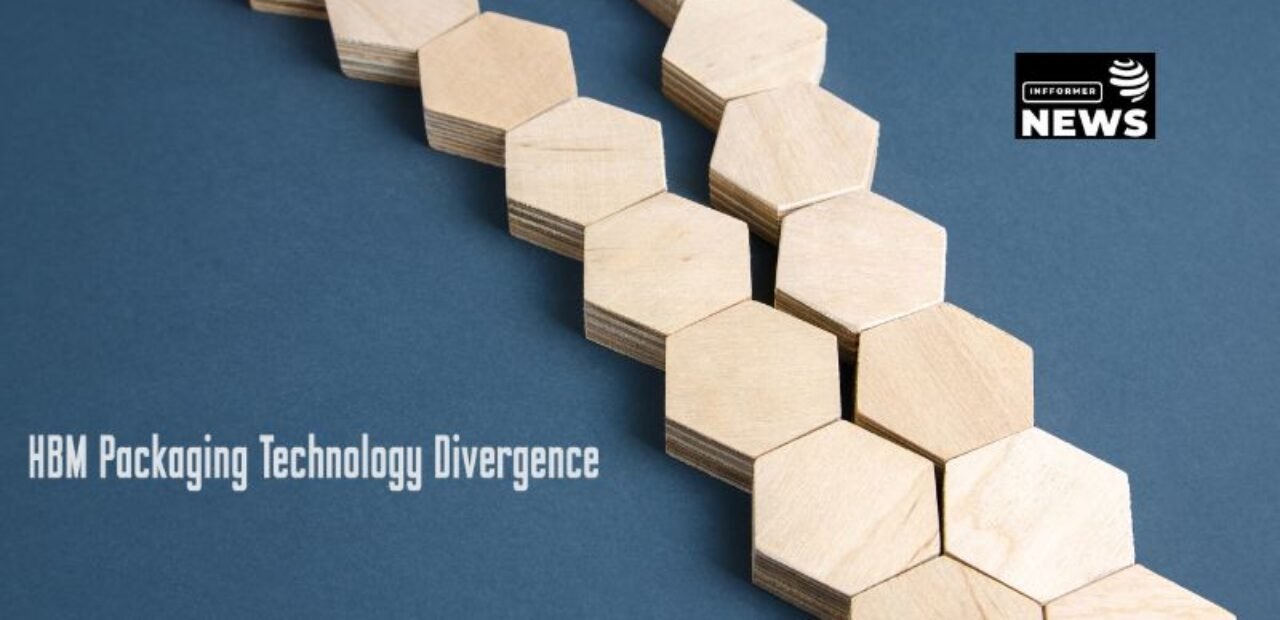HBM Packaging Technology Divergence Explained: A Comprehensive Overview
In the rapidly evolving landscape of packaging technology, the divergence in technological approaches and solutions is an area that has garnered significant attention. HBM Packaging Technology, known for its innovative contributions to the field, represents a fascinating case study in how different methods, processes, and philosophies are shaping the future of packaging. This article explores the concept of HBM Packaging Technology Divergence, examining the factors driving these changes, the benefits, challenges, and the future potential for companies adopting these technologies.
Understanding HBM Packaging Technology
HBM, short for Hot Beverage Machine, is a segment within the larger umbrella of packaging technology that focuses primarily on machines and solutions designed for hot beverage containers, such as coffee cups, tea, and similar products. However, in recent years, the term HBM has come to represent more than just hot beverage machines; it encompasses a broader range of technologies, innovations, and processes that are revolutionizing the packaging industry.
The idea of “divergence” in this context refers to the way HBM technology has branched off into various specialized methods and tools, all aiming to improve efficiency, sustainability, and adaptability in packaging solutions. Divergence signifies the simultaneous evolution of multiple approaches within the field, each with unique applications and advantages. These approaches vary from digital automation to eco-friendly materials, and smart technologies, each contributing to the diverse needs of businesses and consumers.
Factors Driving HBM Packaging Technology Divergence
The divergence in HBM packaging technology is primarily driven by a combination of market demands, environmental concerns, and technological advancements. Below, we explore some of the key factors propelling this shift:
1. Consumer Preferences and Customization
Today’s consumers are more discerning than ever, demanding products that not only meet their needs but also align with their values. Packaging plays a critical role in brand perception, and companies are increasingly leveraging HBM technologies to offer highly customized, attractive, and functional packaging options. Customization allows brands to cater to specific customer segments with tailored designs, colors, and even personalized messages, which can boost consumer loyalty and engagement.
This demand for personalized packaging has driven the divergence of HBM technologies toward digital solutions, such as variable data printing and on-demand production. These innovations allow packaging producers to create short-run, customized packages quickly and efficiently, while reducing waste.
2. Sustainability and Eco-Friendly Packaging
One of the most significant drivers of divergence in packaging technology, including HBM solutions, is the growing emphasis on sustainability. With rising environmental awareness among consumers and increased regulatory pressure, companies are seeking packaging technologies that minimize their environmental impact. As a result, HBM technology has evolved to include solutions that prioritize eco-friendly materials, such as biodegradable, recyclable, and reusable packaging options.
Moreover, energy-efficient machinery has become a central focus within HBM technology. Modern packaging machines are designed to consume less energy during the production process, which not only reduces the carbon footprint but also lowers operational costs for companies.
3. Automation and Smart Technologies
Automation and smart technologies have played a pivotal role in driving the divergence of HBM packaging technology. The integration of robotics, AI, and IoT (Internet of Things) into packaging machinery has transformed the industry by streamlining production, improving precision, and enhancing flexibility. Automated HBM machines can handle multiple packaging formats, sizes, and designs, making it easier for manufacturers to switch between different product lines without costly delays.
Additionally, smart packaging solutions, which embed sensors and digital technologies into packaging, offer enhanced functionality. These innovations allow for real-time monitoring of the product’s condition, providing valuable data on freshness, temperature, and even potential tampering. For food and beverage industries, this level of monitoring can significantly reduce waste and improve safety standards, further increasing the demand for such technologies in the HBM sector.
4. Cost Efficiency and Scalability
Cost reduction and scalability are perennial concerns for packaging companies. The divergence in HBM technologies has introduced new opportunities to streamline production processes and reduce costs through automation, lean manufacturing techniques, and efficient use of materials. These technologies offer packaging companies the flexibility to scale operations up or down based on demand while maintaining efficiency.
Moreover, the divergence in packaging technology has led to modular machine designs, allowing companies to adapt their packaging processes to changing market needs without having to invest in entirely new equipment. This scalability ensures that companies can keep up with fluctuating demand while minimizing capital expenditure.
Challenges in Navigating HBM Packaging Technology Divergence
While the divergence of HBM packaging technology presents numerous benefits, it also brings several challenges that companies must address to successfully navigate this evolving landscape. Some of these challenges include:
1. High Initial Costs
Implementing advanced packaging technologies, such as automation and smart solutions, often requires a significant upfront investment. While these technologies can lead to cost savings in the long run, smaller companies may find it difficult to justify the initial expenditure. Additionally, training staff to operate and maintain these new machines can further increase costs, especially if specialized skills are required.
2. Integration with Existing Systems
For companies that already have established packaging processes in place, integrating new HBM technologies can be a complex task. Ensuring compatibility between legacy systems and modern technology requires careful planning, and any missteps can lead to production delays or operational inefficiencies. In some cases, companies may need to overhaul their entire production line, which can be disruptive and costly.
3. Sustainability vs. Performance Trade-offs
While eco-friendly packaging is a growing trend, companies often face a trade-off between sustainability and performance. For example, biodegradable materials may not offer the same durability or barrier properties as traditional plastics, potentially compromising the product’s shelf life or safety. Balancing the need for sustainable packaging with the requirement for high performance is a challenge that continues to drive innovation within HBM technology.
The Future of HBM Packaging Technology
The future of HBM packaging technology looks promising, with continued advancements expected in automation, digitalization, and sustainability. As the packaging industry continues to evolve, companies that adopt cutting-edge HBM technologies will be better positioned to meet consumer demands, reduce environmental impact, and remain competitive in the market.
1. Increased Use of AI and Machine Learning
As AI and machine learning technologies continue to mature, we can expect them to play an even larger role in packaging automation. Predictive maintenance, real-time production optimization, and intelligent quality control are just a few areas where AI can bring significant benefits. AI-driven machines can automatically adjust production parameters based on data insights, reducing waste, and improving efficiency.
2. Sustainable Innovations
Sustainability will remain a central focus for packaging companies, and future HBM technologies will likely include even more advanced solutions for reducing waste and energy consumption. Innovations such as compostable materials, lightweight packaging, and closed-loop recycling systems are expected to gain prominence. Moreover, advances in material science could lead to the development of new sustainable packaging materials that rival traditional plastics in performance and cost.
3. Integration of Smart Packaging
The integration of smart technologies into packaging is another trend that will likely continue to grow. In the future, we may see more widespread adoption of intelligent packaging solutions that enhance product safety, monitor supply chains, and improve consumer engagement. For example, QR codes or NFC tags embedded in packaging could provide consumers with real-time information about the product’s origin, nutritional content, and environmental impact.
Conclusion
The divergence of HBM packaging technology represents a dynamic and exciting frontier for the packaging industry. Driven by consumer demand, sustainability goals, and technological advancements, HBM technologies are evolving to offer more efficient, customizable, and eco-friendly packaging solutions. While there are challenges associated with the adoption of these technologies, the potential benefits in terms of cost savings, operational efficiency, and environmental impact make them a worthwhile investment for companies looking to stay ahead in the competitive packaging market.
As we look to the future, it’s clear that HBM packaging technology will continue to play a crucial role in shaping the way products are packaged and delivered. Companies that embrace this divergence and invest in innovative solutions will be well-positioned to meet the challenges and opportunities of the next era in packaging technology.
Read also: check





























































